Bullet Grain: What Is It and Why Does it Matter?
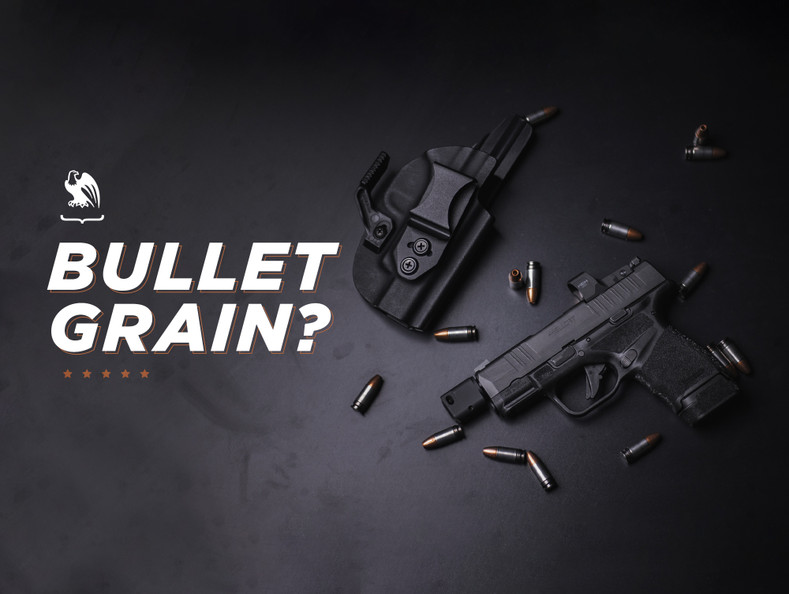
Ammunition grain. You’ve heard the term tossed around behind gun counters and at shooting ranges. You’ve probably even seen numbers like “124-grain” or "115-grain" on the side of your box of ammo and … completely ignored them. Until today, that is.
Bullet grain is the unit of measurement used to specify the weight of a cartridge's projectile. The higher the grain, the heavier the bullet. That weight, in turn, impacts how far a bullet can travel, how accurate it is, and how hard it hits its target.
So, whether you’re trying to narrow down the perfect ammunition for an upcoming hunt or just want to know what you’re looking at while visiting the gun store, here is everything you need to know about grain in ammo.
‘Bullet Grain’ Meaning
Ammo grain is often misunderstood. Many people have the misconception that the “grain” referred to on a box of ammunition has to do with gunpowder. This is understandable since gunpowder is made up of granules and is also measured in grains (confusing, we know). So, what is bullet grain exactly?
Ammunition grain is simply the weight of a cartridge’s projectile – the actual metal piece that is fired from the gun NOT including the casing – not the gunpowder load. The grain of a bullet does not mean it has a greater power charge; it just tells you how much the projectile weighs so you can make an informed decision depending on what you’re using it for. Ammo grains range from 17 to 700 grains.
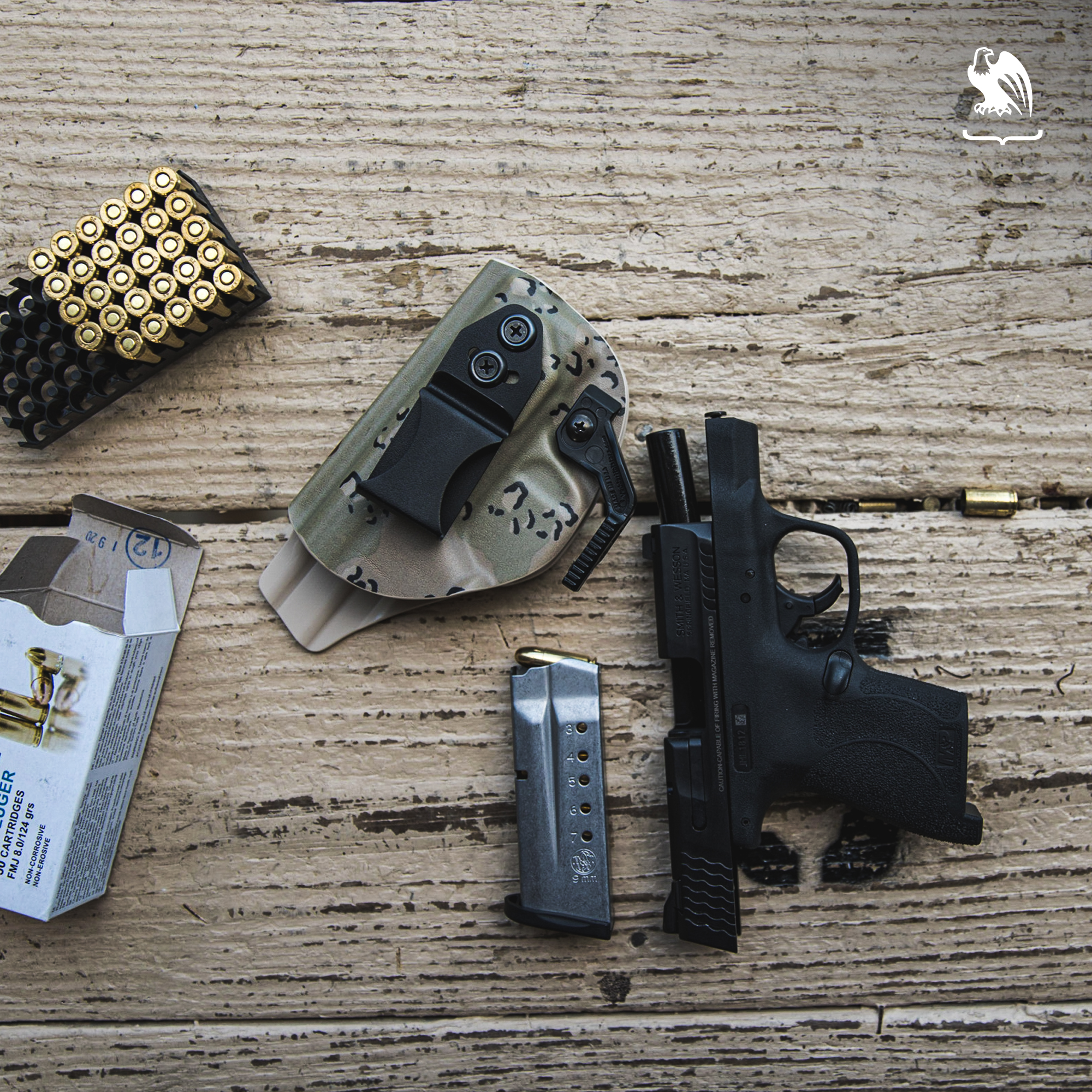
A grain (abbreviated as “gr.”) is the smallest unit of weight in the U.S. There are 7,000 gr. in a pound and 437.5 gr. in an ounce.
So what does this mean for bullets? Basically, the weight of your projectile will impact the speed, distance, and accuracy of its trajectory. Depending on what you’re doing, you’ll want to pay attention to your ammo’s weight so you can choose the best option for the task at hand. For instance, you’ll want to use a different grain for your EDC gun than when taking your rifle out for some long-range target shooting.
Why Does Bullet Grain Matter?
We don’t have to tell you that in shooting, precision matters – a lot. So, naturally, the weight of a bullet has a significant impact on the performance of the ammunition. Grain can influence everything from the kick you feel when you pull the trigger to the overall accuracy of your shot.
Before we get into the specifics of how grain impacts the different aspects of shooting, you need to have at least a basic understanding of ballistics.
Ballistics is the science of how bullets work. It involves the study of how bullets are fired and how they perform. There are multiple categories when it comes to ballistics: internal ballistics, external ballistics, and terminal ballistics.
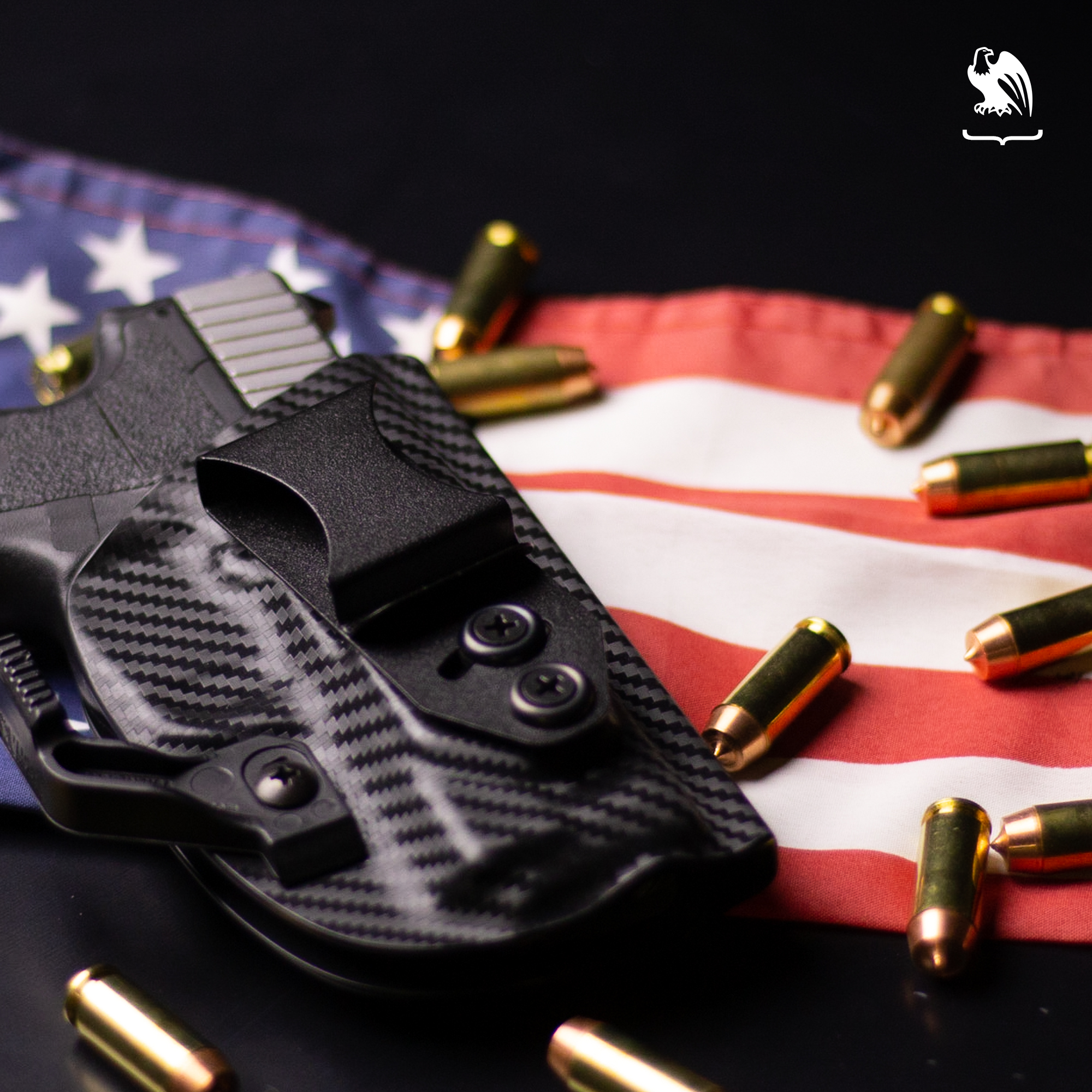
Internal ballistics looks at what happens inside the gun from the time you pull the trigger until the round leaves the barrel. This includes things like recoil and acceleration.
External ballistics studies things that impact a bullet during its trajectory (in other words, the time between when it leaves your gun and hits the target). This involves things like bullet drop – how straight the projectile shoots – drag, and external factors like wind, all of which impact your accuracy.
Terminal ballistics has to do with what happens when the bullet makes contact with its target. This helps us understand how deep a bullet will penetrate and how it will expand when it hits something.
So, how exactly does grain impact ballistics? Let’s break it down.
Recoil
One of the first things many gun owners want to know when learning about ballistics is how bullet grain affects recoil.
Issaac Newton’s Third Law says that for every action, there is an equal and opposite reaction. So, when we fire a round, the force that sends the bullet down the barrel must have an equal and opposite reaction, which is why recoil occurs.
So, you’d probably venture to say that a heavier grain would cause more recoil since you’re sending a larger propellant down the barrel, right? Wrong. Oddly enough, because smaller grain ammo weighs less, they require more speed to penetrate their target. To get enough speed, smaller bullets have to be loaded with more gunpowder to make a more powerful explosion upon firing, causing an equal and opposite reaction of greater recoil.
“Tests show that light bullets have more recoil and muzzle rise than heavy bullets when driven at the same power factor because light bullets need more gunpowder for their required higher speed. The greater amount of gunpowder produces more gas that adds to the recoil force,” Brad Miller writes in a Shooting Times article.
Naturally, other factors, such as gunpowder charge, the size of your gun, and whether you use a pistol or revolver, influence the level of recoil you will get. However, when strictly talking about ammo grains, a lighter projectile will produce more recoil.
Speed and Momentum
When it comes to speed, lighter bullets come out ahead (literally).
When comparing two of the same caliber, a smaller grain of bullet will always win in terms of velocity. Because they weigh less, lighter-grained projectiles can go faster and farther than their heavier counterparts.
However, if it’s momentum you’re after, heavier ammo takes the lead. When it comes to bullets, more momentum means more hitting power. A bullet’s momentum can be determined with a simple equation (yes, more science). Momentum equals mass times velocity (P = MxV).
So, when comparing two same-caliber bullets, the one with the larger mass (hint: the heavier one) will have slightly greater momentum and therefore will hit the target a little harder and penetrate a little deeper.
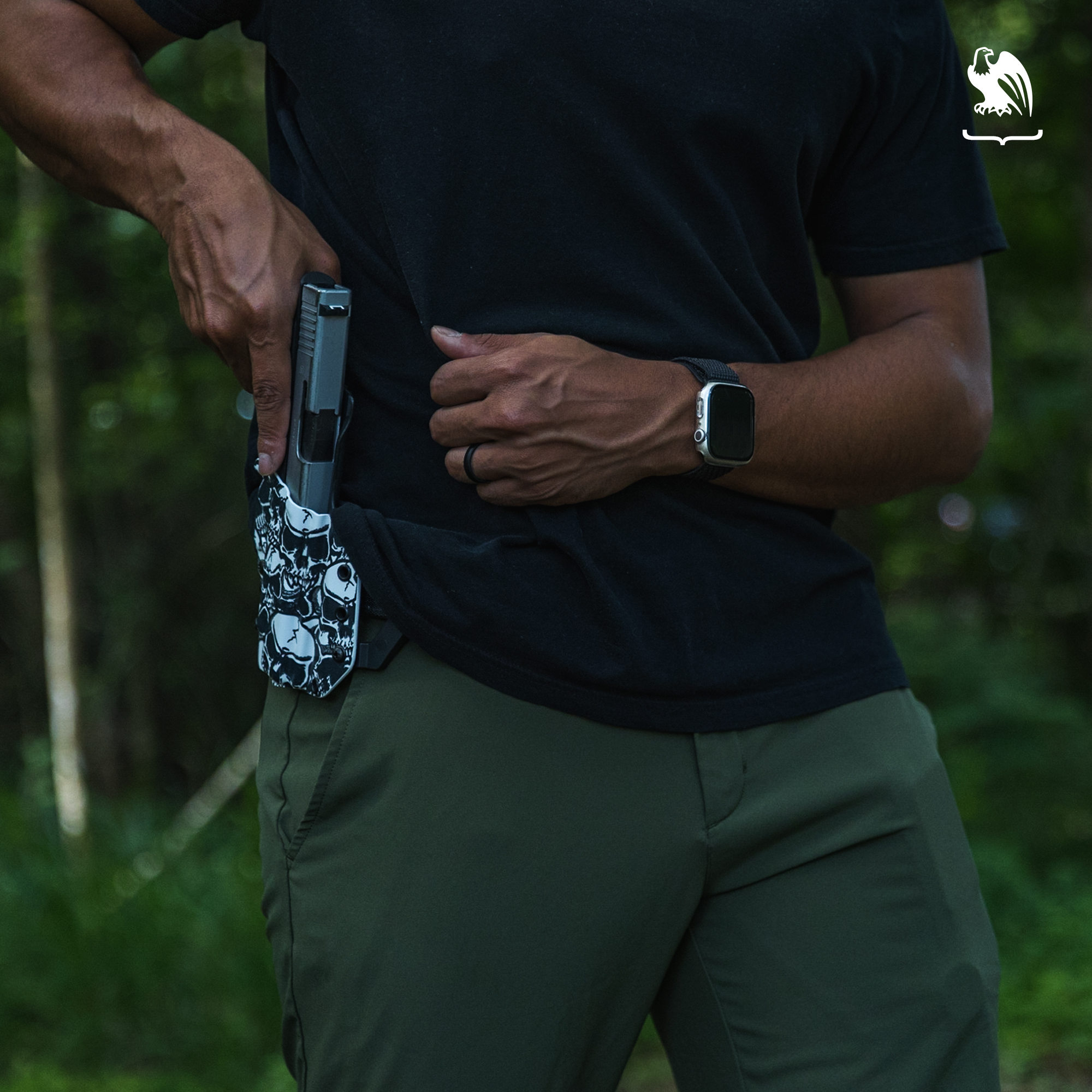
The actual difference in momentum is relatively small, however, and firearms writer Richard Mann writes in a Field and Stream article that while, yes, heavier bullets do have slightly more momentum than lighter ones, the greater velocity that smaller bullet grains have may make it a wash.
“There’s a notion that the heavier a bullet is, the harder it will hit. There’s some truth to this, but the increase in impact energy and momentum due to bullet weight is fairly small. This is partly because we’re dealing with small differences in bullet weight and partly because as bullet weight drops, velocity increases. Velocity is just as important a part of energy on target as is bullet weight,” he wrote.
Another factor to consider is expansion. For a hollow-point bullet to properly expand once it hits its target, it must reach a fast enough speed. So while a heavier projectile will likely penetrate deeper, sometimes lighter, faster ammo is better when it comes to expansion.
Accuracy
Depending on how far you’re shooting, bullet grain can definitely impact the precision of your shot. Because there are pros and cons to both light and heavy-grained bullets in terms of accuracy, which will be the most on-target really depends on what you’re doing and the conditions in which you’re shooting.
When shooting at close range, the weight of your bullet makes little to no difference. But the farther you shoot, the more grain will impact your accuracy.
When shooting long-range in perfect conditions, lighter bullets are more accurate than heavier ones simply because they are easier to project and can maintain a straight path for longer distances. In comparison, the trajectory of heavier bullets starts to drop sooner thanks to the laws of gravity (hello again, Mr. Newton).
When using heavier ammo for long-range shooting, you’ll have to compensate for the drop in trajectory by aiming a little higher. How high you need to aim will depend on how far you’re shooting, requiring a little bit of calculation on your part.
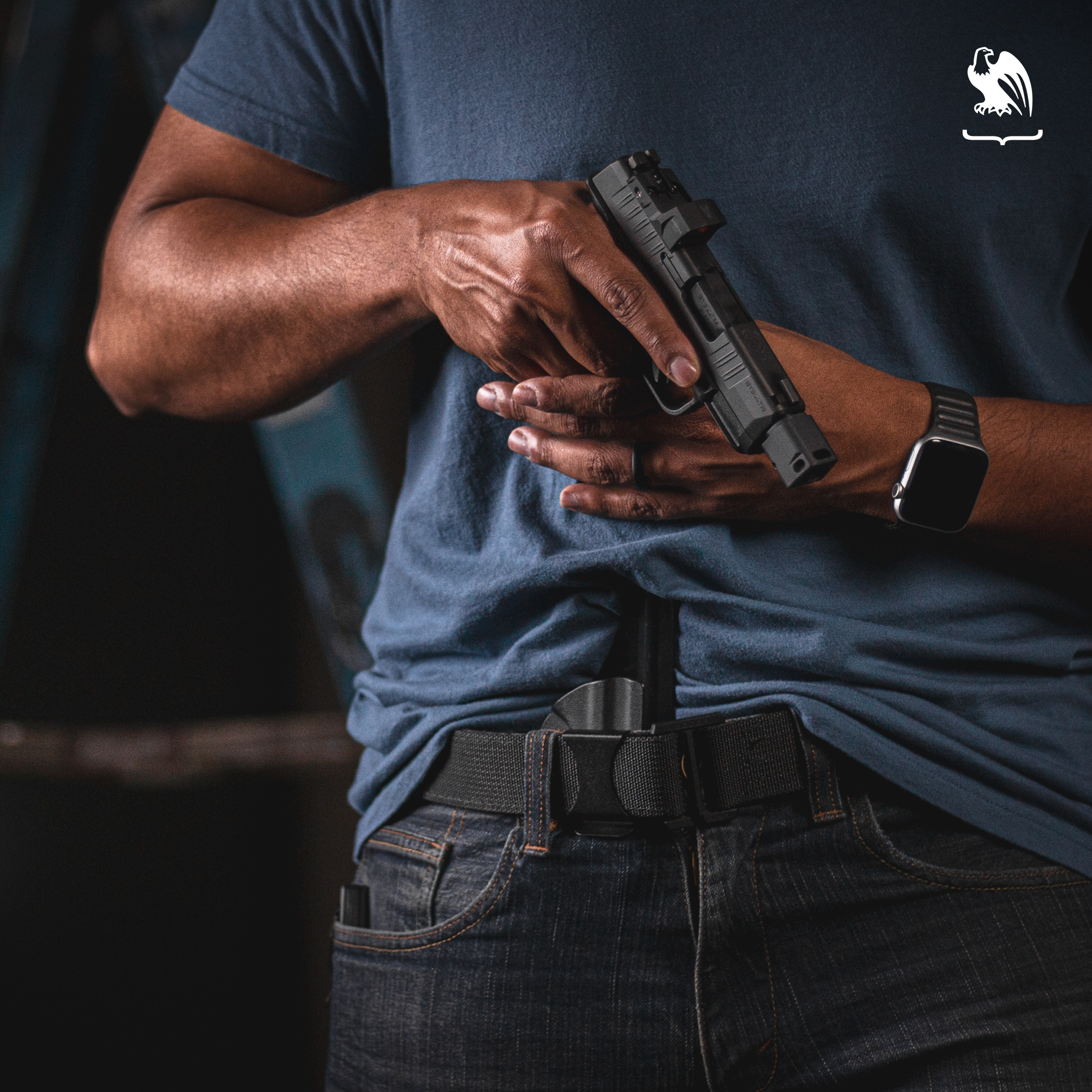
So, when strictly talking about trajectory, lighter bullets tend to be more precise. However, they are also more susceptible to being thrown off course by wind than heavier bullets and have a lower “ballistic coefficient,” which negatively impacts their accuracy, Clint Morgan said in a Classic Firearms video.
“A lighter projectile is also a little more susceptible, well, a lot more susceptible, to wind and typically has a lower, what’s called ‘ballistic coefficient.’ A ballistic coefficient is ultimately a rating scale to determine a bullet’s ability to overcome wind,” he said. “The higher the ballistic coefficiency, the better.”
So, when it comes to accuracy, it really depends on your purpose and the conditions you’re shooting in whether a heavy or light grain bullet will be best. For pistols and other short-range shooting activities, grain probably won’t make much, if any, difference in accuracy. But any time you’re shooting long-range, it’s something to consider.
“It really depends on what, at the end of the day, you’re doing, but if you’re doing long-range rifle shooting, you’re really gonna have to get down to the nitty-gritty,” Morgan said.
Which Grain of Bullet Should I Use?
Okay. So now you know what bullet grain is, how it’s measured, and how it affects recoil and accuracy. Now it’s time for the stuff you really want to know: which grain of bullet should you use?
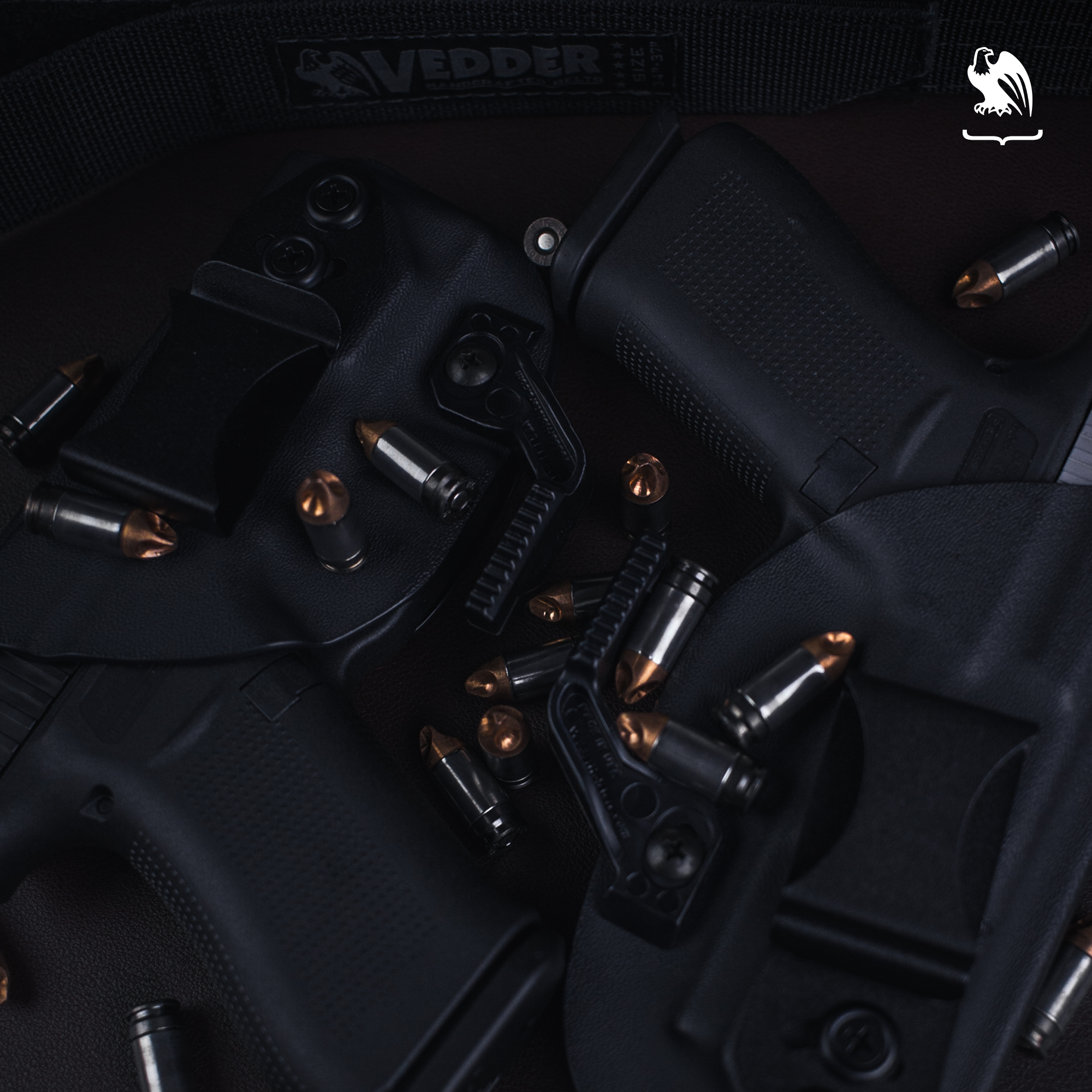
Well, we wish there was a simple answer to that. Unfortunately, there is no one size fits all answer when it comes to grain in bullets. After all, they make bullets in different grains for a reason. The one you should use all depends on what you need it for. Someone looking to take down a Grizzly bear will need an entirely different ammo grain than someone who just wants to plink around at the range for a day.
So, without further adieu, here are some recommendations for the kind of grain you should use based on the type of shooting you’re doing.
What is the Best Ammunition Grain for Self-Defense?
When it comes to choosing ammo grains for self-defense, many experts recommend going with a middle-range to a heavier bullet. Higher grain bullets have a bit more momentum than lighter ones, meaning they can penetrate your target deeper and are more likely to strike an internal organ and stop the threat.
“Typically, people recommend going with a little bit heavier cartridge or projectile [for self-defense] simply because it has a little bit more terminal energy that hits,” Morgan said.
These mid to heavy bullets also pose less risk of overpenetration, which is when a round goes through its intended target and into whatever lies beyond.
“Once it [a heavier bullet] makes impact, it has a little bit better job of penetration, but not overpenetration,” Morgan said. “You don’t want your round to keep on traveling, and now you have no accountability of that round. That’s not good, especially if you have to use it in a defensive situation. So, typically, having a heavier projectile is a good thing.”
For a standard 9mm pistol, 124-147 gr. ammo is generally recommended as good middle to high grain rounds for self-defense, according to GunDigest.
What is the Best Bullet Grain for Competition Shooting?
Ammunition grain is very important in competition shooting and varies somewhat depending on the contest. The two most important factors in competition shooting are speed and accuracy. That means you’ll want minimal recoil so you can reacquire your target faster.
Many competition shooters opt for heavy grain bullets because they have a better ballistic coefficient and are less likely to be blown off course by wind. The heavier rounds are also more likely to knock down steel targets in a competition, according to Fenix Ammo.
The recommended competition ammo grain is 147 gr. for 9mm, 180 gr. for .40 S&W, 230 gr. for .45 ACP, and 75 gr. for 5.56/.223, though this will likely vary depending on the type of competition you’re in and the gun you use.
For example, those competing with a pistol caliber carbine are actually recommended to go with a lighter bullet as the carbine gas system, and longer barrels these guns have means they work more reliably with faster, low-grain rounds.
So, look into your competition’s guidelines and do some research of your own. You’ll likely spend a lot of time training for your competition anyway, so test out some different grains and evaluate the results to see what works best for you.
What is the Best Ammo Grain for Hunting?
When it comes to hunting, it’s critical to find a round that is accurate over long distances, powerful enough to penetrate an animal’s vital organs, and fast enough to expand on impact.
That’s a tall order, so the exact grain you need for hunting will vary greatly depending on what you’re hunting and the rifle you’re using. Luckily, there are a few things you can consider to make determining the right grain easier.
Certain grains are specially designed for hunting specific game, such as the 180 gr. Winchester Super X-308, which is designed for hunting animals like deer, antelope, and wild boar. These are always a safe bet if you don’t want to make the calculations necessary to figure out what grain you need yourself.
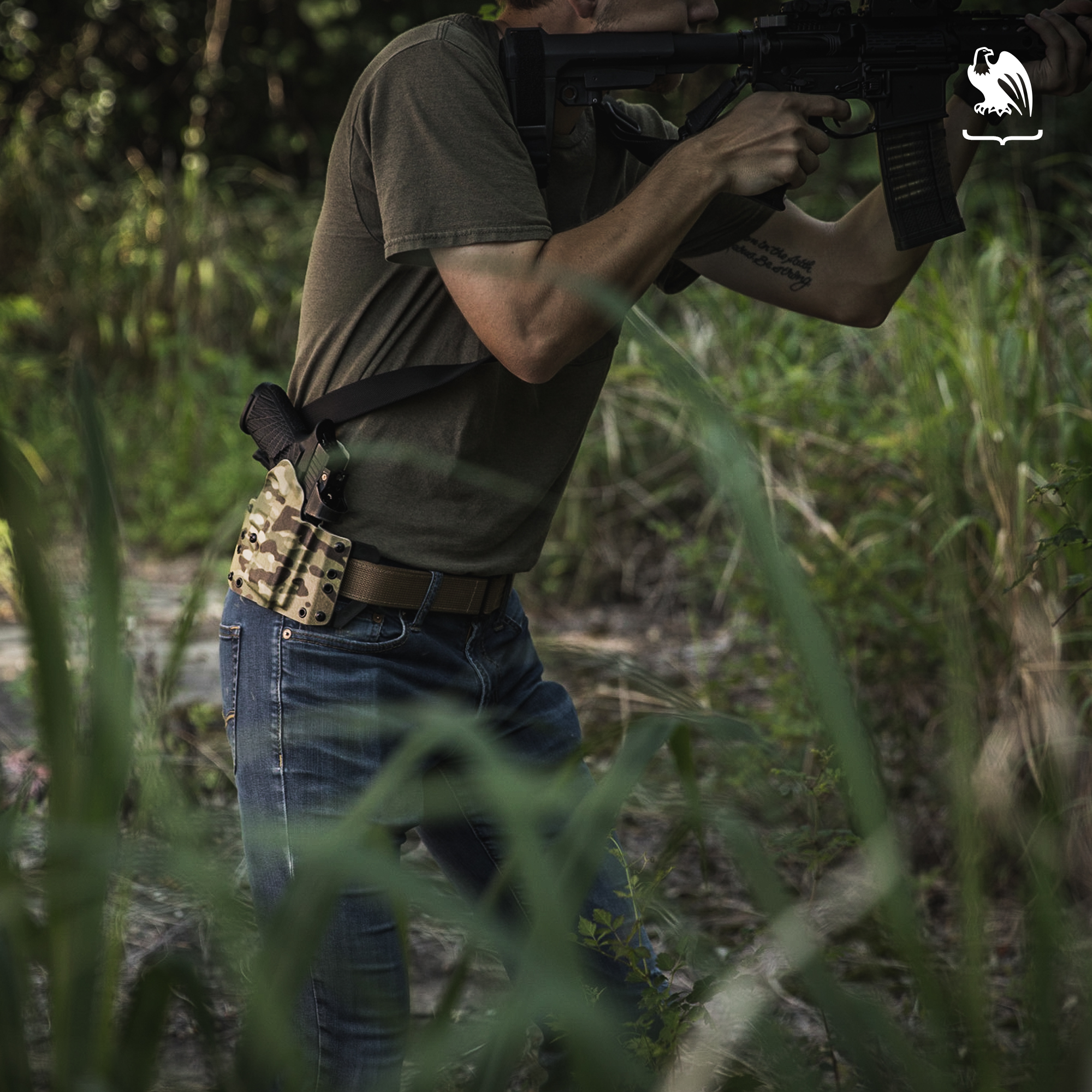
It’s also a good idea to take a look at the manufacturer’s recommendations for your specific hunting rifle for more insight into what kind of ammo you need to use.
As a general rule, though, for standard calibers like the .30-06 Springfield or .280 Remington, anything between 115 gr. and 180 gr. should work well for deer hunting, according to RealTree.
What is the Best Bullet Grain for Target Shooting?
When it comes to buying plinking ammo for target practice, the good news is that pretty much anything goes.
Unless you’re training for an upcoming hunt or competition and want to practice with the rounds you will be using, there’s really no need to go out and invest in a certain kind of ammunition just to shoot it all up at the range.
So, if you’re just shooting for fun, grab an affordable box of ammo and don’t worry so much about what grain it is. Unless you’re trying to show off your impeccable long-distance rifle aim, in that case, you may want to pick up some lighter grain bullets to give yourself an edge.
Summary
The weight of the projectile of a cartridge is measured in grains. A bullet’s weight impacts how far it can travel, how fast it moves, and how hard it hits its target.
Because you have to consider recoil, accuracy, and speed, different weights work better for different applications. Competition shooters, who are primarily concerned with accuracy and speed at long distances, need a different bullet grain than concealed carriers, who need something that has hard-hitting power at close range.
If you are looking for belts or holsters, check out some of our Vedder Holsters products here. Like everything we sell, our holsters and gun belts are covered by a Lifetime Warranty and a 30-day money-back guarantee.
Looking for items beyond holsters and belts? Check out our Resources Page for popular product links like lights, lasers, first aid, maintenance, and more.
To stay up-to-date on all the latest Vedder Holsters content and offerings, check out our blog and follow us on Facebook, Instagram, and Twitter. And be sure to visit our sister company, GeoGrit, for all your American-made minimalist wallet needs.

